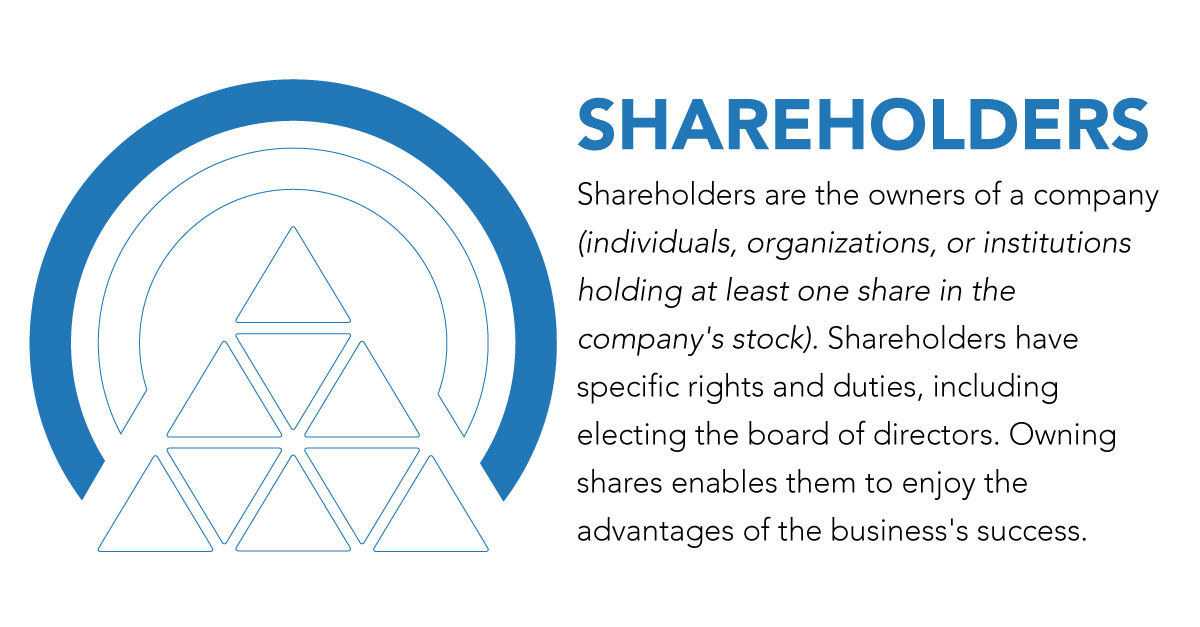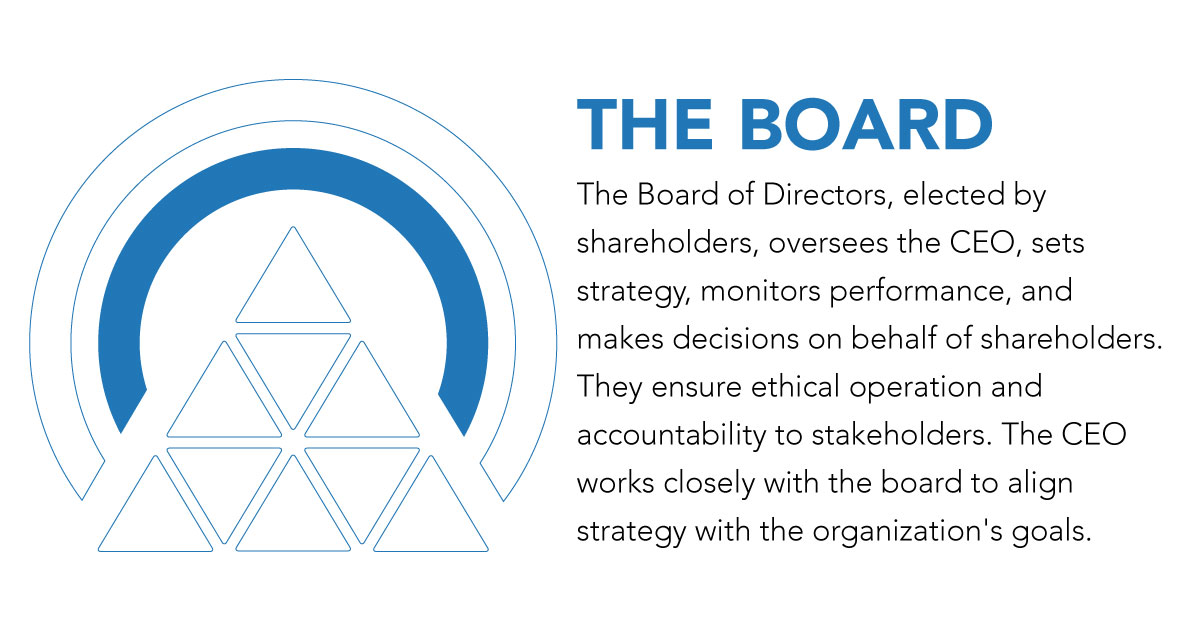Introducing The New Board Director Logo
Building Unified Organizations Through Board Portal Software and Board Education
The New “Board Director” Logo
Introducing a new logo is a significant event for any organization. It represents a fresh start, new ideas, and an opportunity to reaffirm a company’s values and goals. In this blog post, we will dive into the meaning behind the new logo unveiled by Michael Barrick and explore the significance of each element in the hierarchy of modern organizations.
The new logo is a visually stunning design that captures the essence of modern organizations’ complexity. The logo is designed to embody the interconnectedness of an organization’s vital components, reflecting the dynamic nature of modern organizations. The logo’s design portrays a sense of movement, indicating that the organization is constantly evolving and progressing toward its goals.
The new logo’s symbolism goes beyond its aesthetic appeal, serving an educational purpose for those who might not be as familiar with corporate hierarchy. The logo’s elements represent the different layers of organizational structure, from stakeholders at the top to the workforce at the bottom.
Shareholders
Shareholders are the owners of a company, and they can be individuals, organizations, or institutions that hold at least one share in the company’s stock or a mutual fund. As owners, shareholders have specific rights and duties, which include receiving dividends, voting on important decisions, and electing the board of directors. In addition, owning shares enables them to enjoy the advantages of the business’s success, such as increased profits and potential capital gains.
Board of Directors
The Board of Directors is a group of individuals elected by the shareholders of a company to represent their interests and oversee the organization’s management. The board sets the organization’s overall strategy, monitors its performance, and hires and evaluates the CEO. The Board of Directors also makes decisions on behalf of the shareholders, such as mergers and acquisitions, major investments, or significant changes to the organization’s structure. The Board of Directors meets regularly and ensures that the organization operates responsibly and ethically, aligning with its mission and values. They are accountable to the shareholders and must act in the organization’s and its stakeholders’ best interest.
CEO
Beneath the Board of Directors lies a pivotal figure in any organization: the CEO. This central leader unites all aspects of the organization, ensuring each member works together towards the collective goals. With a clear vision and decisive leadership, the CEO fosters harmony between stakeholders, shareholders, management, and the workforce, providing a guiding light that illuminates the path to success.
The CEO, also known as the Chief Executive Officer, is a top-level executive who plays a critical role in overseeing the operations and performance of an organization. As the highest-ranking officer, the CEO is responsible for developing and implementing strategies that align with the company’s mission and goals. They lead the organization’s management team, employees, and stakeholders and are the primary decision-maker for its operations and investments. The CEO is accountable to the board of directors and shareholders for the organization’s financial performance and overall success and is expected to maintain effective communication with all stakeholders to ensure transparency and collaboration. In short, the CEO drives an organization’s success, providing direction, leadership, and strategic vision.
Management
The management works under the CEO to develop and implement strategies that align with the organization’s mission and goals. Management is responsible for leading and directing the workforce, providing training, and development, and ensuring that employee performance is aligned with the organization’s objectives.
The management team typically comprises high-level executives responsible for managing various aspects of an organization’s operations. These may include:
Chief Operating Officer (COO): responsible for the organization’s day-to-day operations, ensuring processes run smoothly and efficiently.
Chief Financial Officer (CFO): responsible for managing the financial operations of the organization, including budgeting, accounting, and financial reporting.
Chief Marketing Officer (CMO): responsible for developing and implementing the organization’s marketing strategy, including advertising, branding, and product development.
Chief Technology Officer (CTO): responsible for managing the organization’s technology infrastructure, including hardware, software, and IT staff.
Chief Human Resources Officer (CHRO): responsible for managing the organization’s human resources department, including recruitment, employee relations, and compensation and benefits.
Chief Legal Officer (CLO): responsible for managing the organization’s legal affairs, including contracts, compliance, and litigation.
Depending on the organization’s size and structure, other positions may be included in the management team, such as vice presidents or directors of specific departments or functions. The management team works closely with the CEO to develop and implement strategies that align with the organization’s mission and goals.
Employees (Workforce)
At the core of our new logo lies the workforce, the organization’s lifeblood. Their passion, dedication, and hard work create a powerful, unified force that drives the organization forward, bringing the collective vision to life. They are the unsung heroes who keep the organization running smoothly daily, ensuring that every element works harmoniously towards the common goal.
Stakeholders
An organization’s stakeholders are the most important. They are the customers, employees, suppliers, and community. Stakeholders are the “why” for what the organization does, providing the overarching purpose and direction that guide the organization’s actions, objectives, and policies.
Nonprofit Stakeholders play a crucial role in defining the direction and purpose of an organization, both in nonprofit and for-profit corporations. In a nonprofit organization, stakeholders can include donors, volunteers, beneficiaries, board members, and staff members. Donors provide financial resources to support the organization’s mission, while volunteers offer their time and skills to assist with various programs and initiatives. Beneficiaries are the individuals or communities the nonprofit aims to serve, and their feedback and input are critical in shaping the organization’s programs and services. Board members provide oversight and governance, while staff members execute the day-to-day operations.
For-profit corporations’ stakeholders , in contrast, including shareholders, customers, employees, suppliers, and the community. Shareholders are the company’s owners and are vested in its profitability and growth. Customers provide revenue by purchasing the company’s products or services, and their feedback is vital in shaping the company’s offerings and marketing strategies. Employees are critical in executing the company’s operations, and their engagement and satisfaction are important for its success. Suppliers provide the necessary resources and inputs for the company’s operations, while the community represents the company’s activities’ broader social and environmental impact.
Regardless of the type of organization, stakeholders define the “why” of what the organization does. They provide the overarching purpose and direction that guide the organization’s actions, objectives, and policies. Without stakeholders, an organization would lack a clear direction and purpose, leading to confusion, inefficiencies, and conflicting priorities. Therefore, it is essential for organizations to identify and engage with their stakeholders to ensure that they are aligned with the organization’s mission and values. By doing so, organizations can build a strong foundation for success and sustainability.
The Future of Board Director
Our rebranded logo represents our unwavering commitment to empowering the Board of Directors and management to achieve their mission through innovative board management software solutions. Our board portal streamlines operations and enhances communication to drive organizational success. We simultaneously launch the logo and Board Director 2.5, offering even more powerful features and capabilities to support organizational excellence.
Thanks for reading, and let’s move forward together to achieve your mission.





